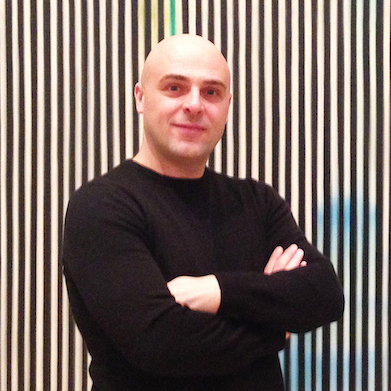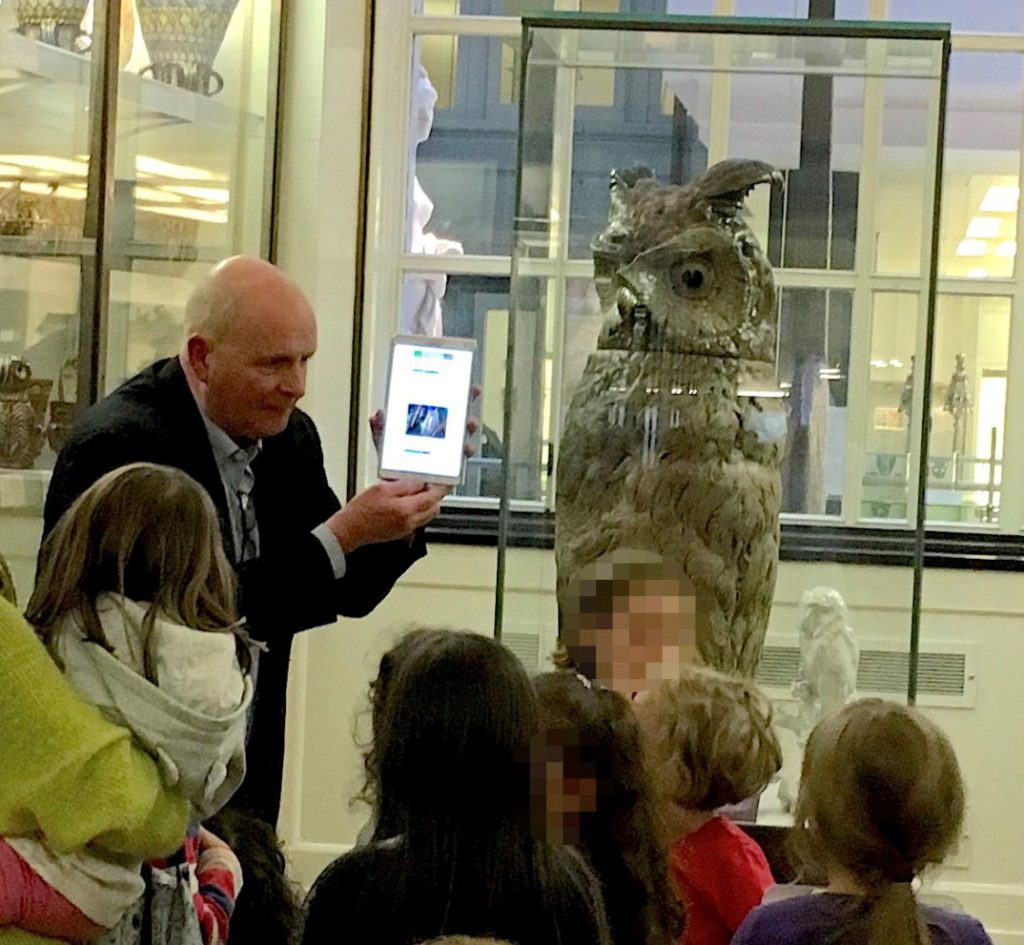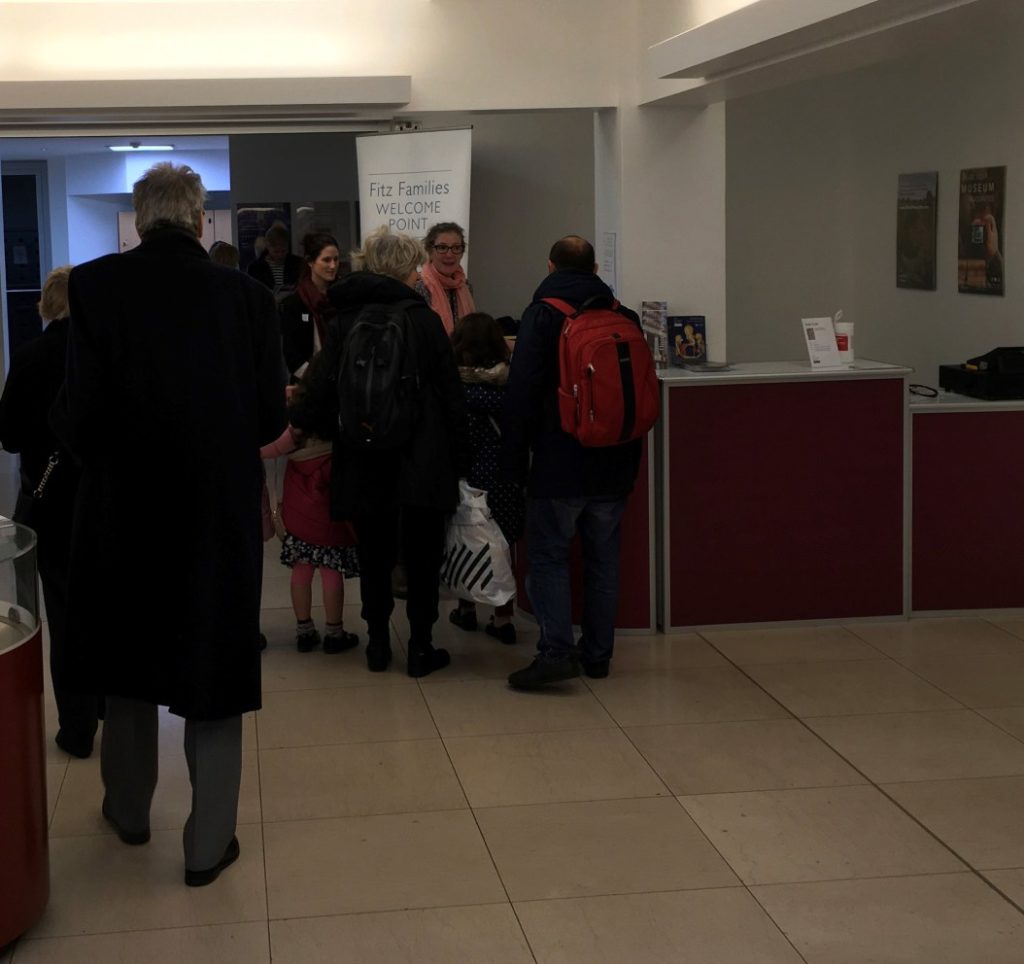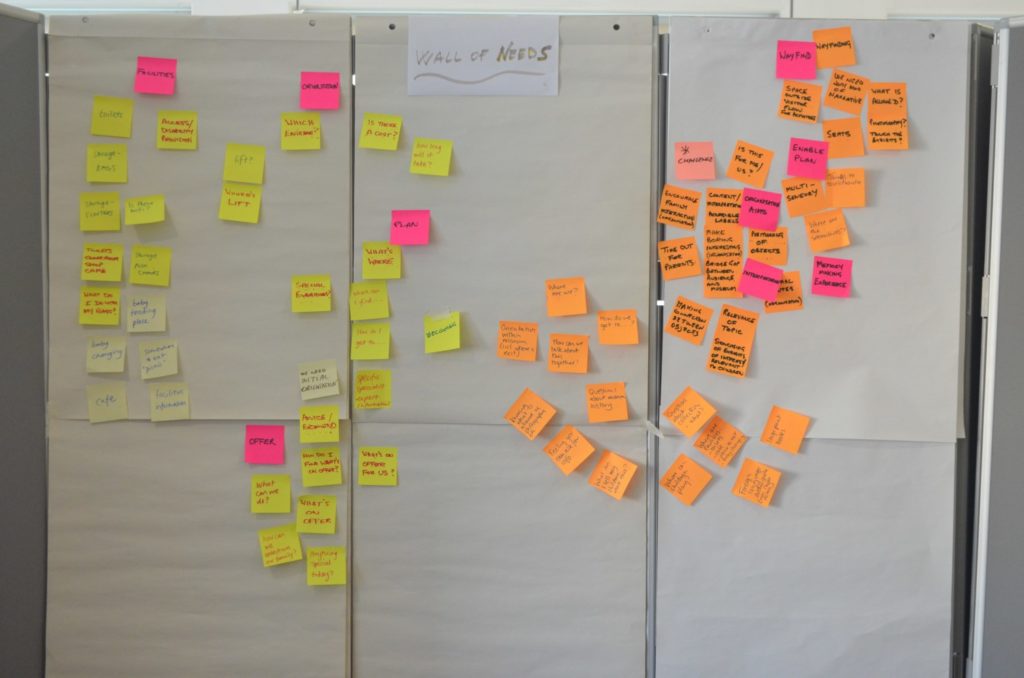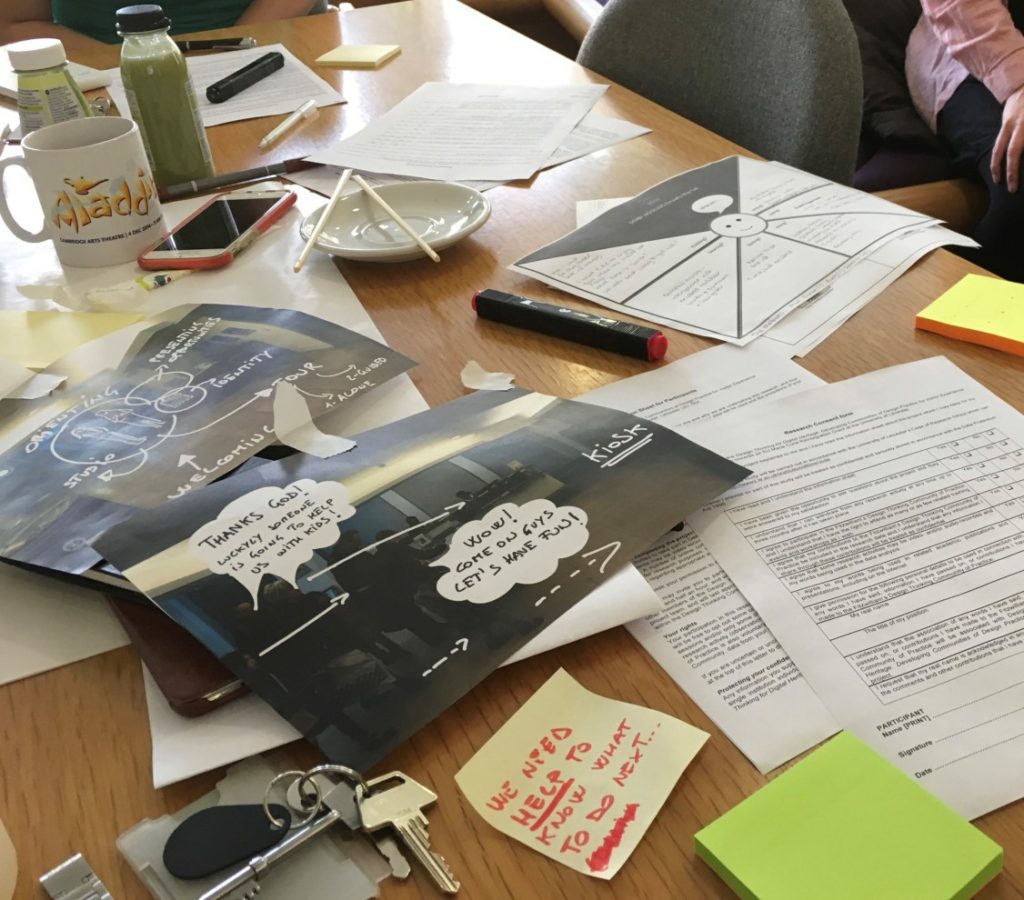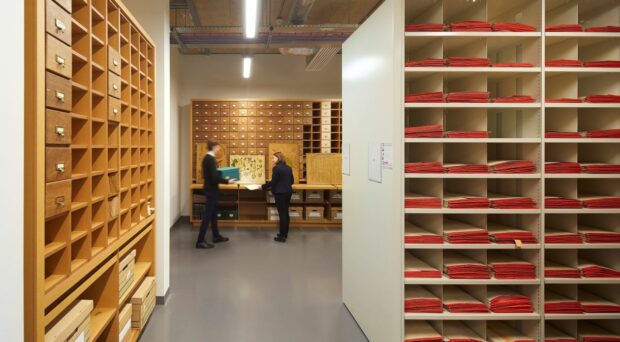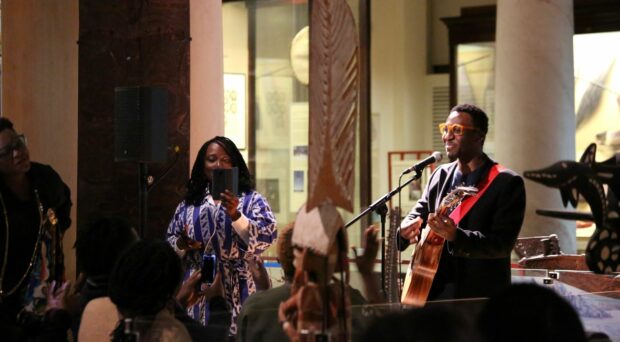What are the right questions to ask when designing a new resource or service? What methods can we use to assist collaborative and creative thinking?
Marco Mason, a Marie Curie research fellow at the School of Museum Studies, University of Leicester, has been on placement with the Fitzwilliam Museum to carry out a research and pilot project in which he is applying (and studying) a Human-centered design (HCD) approach called Design Thinking.
This is the first post in a series, where Marco will br discussing the context of his study and how he has adapted and introduced Design Thinking at the Fitzwilliam Museum:
What is Design Thinking?
It is a human-centred design practice that aims to develop a deep and empathic understanding of visitor experience. Also, it is a collaborative practice carried out by multidisciplinary teams and, often, with visitors, which follow an iterative process that helps them to move from generating insights about end users to idea generation and testing and finally, to implementation and an approach. Prototyping is considered an integral practice within the iterative process, in which a large-scale adoption of visualisation methods accelerates learning and foster collaboration.
Why is it important?
The museum sector has began to recognise that design (thinking) is going to play a crucial role as cultural institutions, which increasingly need to rely on human-centred design practices to attract and engage audiences through education, entertainment and meaningful experiences. Evidences of this increasing attention on HCD are not only demonstrated by a growing interest from academic world, but also by an increasing number of institutions.
What is the pilot project at the Fitzwilliam?
At the Fitzwilliam Museum we are carrying out a pilot project in which we are applying (and studying) a Human-centered design approach called Design Thinking.
The practical part of this project aims to design an information system for families visiting the Fitzwilliam Museum.
Approach
We set up a project team of Fitzwilliam educators, curators, digital specialists, visitor service, and designers and devised, employed (and took advantage of) collaborative design methods and design techniques for the design of the Family Guide service – such as brainstorming, ethnographic research methods, visitor experience journey maps, and different prototype techniques.
Challenges
The Family Guide goal is to “design for a family that wants to spend a nice time at the Fitzwilliam. Learning is important for the family but it should be part of the overall engagement rather than a final goal itself.” (extract from the design brief). The challenges this project presents in term of design activities are the following:
- Overcome the technology driven-design approach with a human-centered design approach;
- smashing of assumptions we (museum practitioners) have about how things should be;
- (very) limited time availability;
- very low budget;
- Collaborative approach is a crucial aspect by promoting the active participation of museum professionals (and other stakeholders) in the creative process to promote the integration of different knowledge domains
- Set up a creative environment to foster team creativity
- Process
The design process lasts around four months – from the end of December 2016 to middle of April 2017. It essentially consists of the following five phases, that correspond to 5 main workshop sections (meetings). The process will lead to the creation of an advanced design concept and the realisation of a low fidelity prototype, which will turn to be useful (and hopefully successful) for fundraising.

This diagram illustrates the design thinking framework we adopted, which maps the design process into five distinct phases. Also, it illustrates the divergent and convergent stages of the design process.
Understanding phase: we gained an empathic understanding of the problem we are trying to solve and the audience. Most important, we observed and empathizing with visitors (families) in the gallery to understand their experiences and motivations. Also, we make use of the visitor research (e.g. reports) conducted by the University of Cambridge Museums. The main aim of this phase was to identify family needs.
Defining phase: After having built a better understands of the design context and the visitor needs, we revisited the initial design challenge and re-define the design problem. Also, we defined the target audience through the creation of personas.
Ideating phase. In the first two phases we identified the visitor needs, defined our target audience, and stated the design problem. In the ideation phase was time to put our brains to work creatively. By using some useful design techniques (e.g. empathy maps, visitor experience journey map, and personas), we generated ideas to answer to the design problem defined in the previous phases.
Prototyping phase and testing phase. We will prototype what we consider the most promising ideas into something “tangible”. We will involve visitors in these two phases to both refine our ideas and test possible (interesting) solutions.
What we have learnt / are learning
The team has embraced with enthusiasm these challenges. The team members are reporting first positive feedback (which will be systematically analysed at the end of the project) regarding the Design Thinking approach that enables the team to foster the development of a deep and empathetic understanding of the visitors and their experience. Also important has been to perceive and framing the design problem in new way; this, in order to avoid starting from the technology (i.e. we must design an iPhone app!), instead from the visitor needs.
Another aspect that is particularly appreciated is the fact that this human-centred design approach enhances collaboration within multidisciplinary teams and partnerships with end-users. Finally, to support our Design Thinking process we are entailing extensive use of visualisation methods that allow to accelerate learning and foster collaboration through an iterative process that takes the design team through cycles of generating insights about end-users, generating and testing ideas and implementation. The team are now thrilled to jump into the prototyping phase and realising the first low fidelity prototypes (paper- prototype) of the ideas they have generated during the previous phases.
What’s next
The next blog post will describe in detail how our team undertook the first phase, Understanding.
Further information about Design Thinking
Derby Museums is one of the most significant examples of how HCD has radically transformed and enhanced organisational practice. They have produced a Human-Centred Design Handbook to support staff in the process of talking to and working with visitors and communities.

